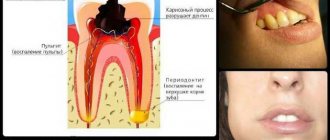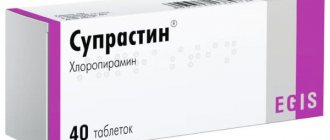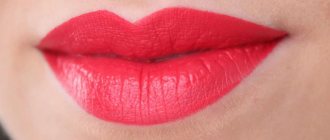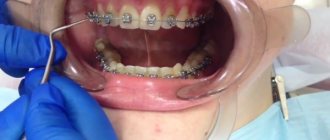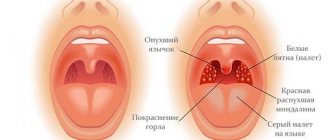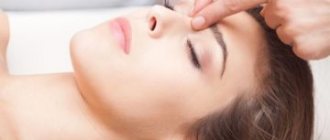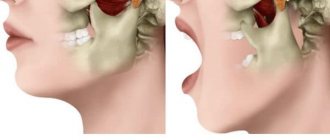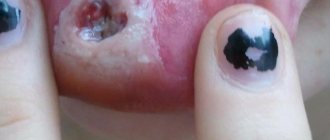Development mechanism
Bruises and swelling after a bruise on the face are common phenomena that require mandatory examination by a doctor. When struck, tissues and blood vessels may be damaged, and this can lead to unpleasant consequences for health.
Note! You should be especially careful about hematomas near the eyes when there is severe hemorrhage and decreased visual acuity. This can lead to complete blindness and other serious visual problems.
Usually, after a bruise, a swelling and swelling forms on the face, and over time a bruise appears. When sharp pressure or strong compression of the tissues at the site of impact occurs, the integrity of the tissues and small blood vessels is damaged. But the skin itself has a stronger structure, capillaries burst underneath it, fragile vessels break, but the skin remains intact. Fluid is released from the tissues, resulting in hematoma and swelling.
At the initial stage, the swelling is milder, but often it quickly increases in size. After approximately 8-10 hours, a hematoma appears. Under the skin, the blood hardens, first the skin becomes purple in color, and then turns into a dark blue color, and finally acquires a purple color.
Cause of red eyes after an impact
It is necessary to make a visit to an ophthalmologist if visual acuity has decreased, pain is felt in the eyeballs, and the whites have turned red. All of these symptoms may be due to:
- hemorrhages in the retina, orbit;
- hemorrhages in the vitreous body;
- contusions of the orbital area;
- hyphemas.
These diseases can only be treated by a qualified specialist. Lack of quality medical care can cause a significant decrease in vision and even its complete loss. You cannot choose drops or other medications on your own. A professional examination of the organ of vision is required to accurately diagnose its condition.
Causes
Severe bruises lead to swelling and bruising on the face. But this can be caused by various reasons. This usually occurs during a strong fall, especially from a height. Unsuccessful sports activities, jogging, sudden movements, carelessness and non-compliance with safety precautions. All this can lead to a blow to the face and the formation of severe swelling.
Among the main reasons are:
- jumping and falling from heights;
- traffic accidents;
- fights, blows to the face with a fist or a blunt object;
- impacts on furniture and other structures;
- active sports - boxing, wrestling, karate, strength training.
Swelling, contusions and bruises on the face are often observed with sudden movements, blows, or falls. A person may inadvertently fall and hit his face hard, resulting in a large hematoma appearing in this place.
Symptoms of wound suppuration, what a purulent wound looks like
The general reaction of the body is expressed in an increase in body temperature, an increase in heart rate, and an increase in the number of leukocytes in the blood. When examining the wound, pus is found. Pus is an inflammatory exudate with a significant content of protein, cellular elements, microbial flora, and wound enzymes. At the beginning of the inflammatory process, the pus is liquid, later it becomes thick. The type of pus, smell, color depend on the microbial flora that caused the inflammatory process. Over time, in old purulent cavities, the microbial flora in the pus disappears or loses its virulence.
"Festering wounds"
and other articles from the section Surgical diseases
Damage to the skin of the extremities often leads to the formation of an inflammatory process. Various cuts, wounds on the arms and legs can be easily treated at home. But if an infection gets into the damaged area, there is a risk of an abscess. Purulent wounds must be taken seriously and seek medical help in time to eliminate this phenomenon and avoid negative consequences.
How to help immediately after an injury
How to remove a tumor and bruise from the face without leaving a trace? It is important to take therapeutic action immediately after the injury, otherwise other unpleasant symptoms may develop, and the hematoma will become more pronounced and pronounced. Moreover, a bruise on the face is always visible, this negatively affects the appearance.
So, you can quickly remove a bruise on the face and its consequences using simple and affordable means:
- The most correct solution would be to apply ice to the injured area. It is advisable to wrap it in a piece of cloth to prevent frostbite. A small piece of ice or frozen meat can be wrapped in a cotton towel and applied to the bruised area. You need to hold it for as long as possible, this will speed up the resorption of blood accumulation and prevent the appearance of a large hematoma and tumor.
- A few minutes after applying ice, you can use a herbal compress. For it you can use plantain leaves, wormwood, St. John's wort, and yarrow. The herbs should be poured with hot water and left to steep. After filtering, the decoction is recommended to be used cold. Then a piece of bandage is soaked in it and applied to the bruised area. As the compress warms up, the bandage needs to be changed to a colder one. Usually, after applying the compress within half an hour, the swelling subsides.
- If you don’t have the necessary herbs for a compress on hand, you can apply a bandage soaked in tea leaves to the injured area. You can keep the tampon for several minutes, and when it gets warmer, you need to replace it with a new cold one.
- If a slight bruise of the face occurs, treatment can be carried out at home. To do this, you can use onion juice. The onion head must be rubbed through a fine grater and the juice must be squeezed out of the pulp well. A cotton pad is moistened in it and applied to the injured area. The juice irritates the skin, increases blood circulation, which accelerates the resorption of swelling and bruises.
- You can relieve swelling and prevent bruising with vinegar. But it is better to use vinegar with a concentration of no more than 10%, otherwise you can severely burn the skin. Under no circumstances should vinegar be applied if there are open wounds or damage to the surface of the skin.
- Swelling and hematomas can be quickly eliminated with the help of fermented milk products - fermented baked milk, kefir. They are always in the refrigerator, so they can help with swelling and also reduce pain. It is enough to lubricate the bruised area with kefir or fermented baked milk and after a short period of time the swelling will decrease.
Note! The remedies are effective in situations where they are used immediately after an injury. If a compress or ice is applied in the first minutes, the swelling will quickly decrease. But in other cases they will be useless.
What to make a compress with
Successful treatment of gout depends on the correct choice of medications.
Dimexide
Compresses using dimexide effectively relieve inflammation and pain during gout exacerbation and have a pronounced antimicrobial effect. The active substance dimethyl sulfoxide is quickly absorbed into the tissue and dissolves salt build-ups on the joint.
To prepare the solution 1 tbsp. l. Mix the drug with the same amount of water at room temperature. Soak several layers of gauze in the solution and apply it to the sore joint. Cover the top with polyethylene, a natural breathable fabric (cotton, etc.) and an insulating layer, such as a wool scarf. You need to keep this harness for 20–30 minutes. Depending on how severely the joint is affected, the course can last 10–60 days. To prepare compresses with dimexide for gout, you must purchase a 50% solution.
Carefully! The use of this substance is contraindicated in children under 12 years of age, as well as in women during pregnancy and lactation.
Dimexide and novocaine
A compress for gout with dimexide and novocaine helps to relieve joint pain especially quickly. To prepare the solution you need 30 ml of dimexide and 50 ml of a 2% novocaine solution. The straps are applied as in the first case. This compress should be kept for half an hour to an hour.
Bishofite
This product is of natural origin. It relieves inflammation and pain well, has a resolving effect on uric acid crystals.
Bishofite must first be heated to +40 °C, and the sore joint must be warmed with a heating pad or under running hot water. After soaking a gauze bandage with the product, apply it to the sore area and secure with polyethylene and a warm cloth. Tie an additional scarf on top. This bandage is kept for up to 10 hours (it is better to apply it before bedtime).
This product can be used daily or every other day. Depending on the stage of gout, the course can last up to two months.
Vodka compress
Alcohol-based painkillers and anti-inflammatory compresses have proven themselves well.
To prepare them you will need either alcohol (96%) diluted in water 1:3, or vodka diluted 1:1. After soaking cotton wool in the solution, apply it to the affected area, then completely cover and secure with polyethylene. Leave the harness on overnight. In the morning, remove it and wipe the treated area with warm water.
Important! Cellophane must completely cover the cotton wool, otherwise the alcohol, as it evaporates, will lower the temperature of the joint, and cold lotions for gout will only be harmful.
To relieve a gout attack, use alcohol tinctures with May (not Michurin) lilac. The flowers are poured into a 0.5 liter jar (to the top, but loosely, without compacting) and filled with alcohol or vodka. Infuse in a dark place for 21 days and filter. The compress is applied in the same way as a regular alcohol compress.
Apple vinegar
This remedy helps flush out uric acid from the joints, thus significantly alleviating gout.
In the evening, soak a paper napkin in natural apple cider vinegar (6%) and apply it to the joint, secure it with polyethylene and insulate it. Leave it overnight.
Be careful: abuse of this substance worsens the condition of the joint.
Medications
For swelling of the face after a bruise, you can use medications that can eliminate swelling, hematomas, and swelling of tissues. Doctors recommend using external medications that have a calming, anti-inflammatory and analgesic effect.
Important! Compared to folk remedies, pharmaceutical drugs have a stronger effect. They will be able to quickly eliminate the external manifestations of injury.
Before using any drug, you should carefully study the instructions. It is important to consider possible contraindications and side effects.
Troxevasin
If you don’t know how to remove swelling and bruises from your face, then you can use an affordable and effective external remedy - Troxevasin gel. The product has a strong anti-inflammatory and anti-edematous effect. The active substance, troxerutin, penetrates damaged tissue, resolves blood clots and quickly eliminates hematomas.
So how to relieve swelling after an impact using Troxevasin gel? The application is quite simple:
- a small amount of gel should be applied to the injured area;
- the product should be rubbed in with light movements until completely absorbed;
- It is recommended to apply the ointment 2-3 times a day;
- It should be used until the swelling and hematoma completely resolve.
Doctors often prescribe Troxevasin gel for serious injuries that are accompanied by inflammatory processes. The product can be applied to areas near the eyes. But first you need to consult a doctor.
Indovazin
If your face is swollen after bruises, you can use the external remedy Indovazin. It is produced in the form of a gel, which causes the resorption of hematomas. After application, swelling decreases and painful symptoms are eliminated.
Note! The products contain special components that quickly heal wounds, strengthen capillaries, and normalize blood circulation. But do not forget that Indovazin gel has contraindications and side effects.
You should not use Indovazin after a facial injury if you have the following conditions:
- blood clotting disorder;
- diseases of the gastrointestinal tract;
- pregnancy;
- age up to 14 years.
It is recommended to apply the gel to injured areas up to three times a day. The drug should be used until the unpleasant symptoms are completely eliminated.
Badyaga
If the face is very swollen after bruises and a bruise appears, then you can use an effective and natural remedy called Bodyaga. It really helps to quickly eliminate a severe bruise, but still do not forget about precautions.
Usually Bodyaga helps get rid of a bruise in a few days. The product is available in two forms - powder and gel. But if your face is swollen after an injury, then it is better to use the gel, because it does not need to be pre-prepared. It quickly penetrates damaged tissue and eliminates swelling.
Ketonal
Ketonal gel helps eliminate severe swelling and hematomas after a bruise. The product has a strong anti-inflammatory and analgesic effect. After application, it has a calming effect and reduces pain.
The following external agents have a similar effect:
- Diclofenac;
- Voltaren;
- Dolgit;
- Ketoprofen;
- Pentalgin extra-gel.
It is worth noting! Any external remedy with an anesthetic effect should be used in emergency cases. It is recommended to use them no longer than 5 days, otherwise unpleasant symptoms may occur.
Drug therapy and other means
Swelling should be removed after identifying the cause that caused it. Only a clarified etiology can suggest the correct means to remove excess fluid from the body. In case of an allergic reaction, these will be antihistamines; in case of hormonal imbalance, hormonal drugs (they are also prescribed in the case of pathological damage to membranes and blood vessels in order to stabilize cellular structures and reduce the outflow of fluid from cells).
The main way to relieve swelling is considered to be diuretics that stimulate the functioning of the renal tubules, as a result of which excess water begins to be transported from the body.
You should not abuse diuretics, because along with artificially induced urination, potassium leaves the body, which can dramatically affect the functioning of the heart and other important internal organs.
And the increased load on the kidneys in connection with this, in the case of an undiagnosed disease, can lead to an exacerbation of the process occurring in the organs. Urinary medications should be taken with caution by those who have low blood pressure, problems with hematopoiesis, blood clotting, or recent illnesses associated with a malfunction of the body's immune system.
If a person considers himself healthy enough to take medications that can have a lot of side effects, then soon seeing a doctor will become really necessary. There are also such simple folk remedies as corn silk, rose hips, chokeberry, dill seeds, parsley leaves, diuretic medicinal preparations that can be purchased from herbalists or at a pharmacy, and even strong black or green tea drunk with milk. But all this is only the elimination of symptoms, which will appear again and again if the cause that caused it is not eliminated.
What not to do during treatment
If there is a bruise on the face from a blow, then you definitely need to know how to treat this injury. But special attention should be paid to the doctor’s recommendations, because many people take incorrect actions that lead to worsening.
You can prevent the spread of swelling and bruising on the face after a bruise by following these tips:
- Under no circumstances should you warm up the injured area during the first 48 hours after the injury. Intense heat will make the condition worse. You can quickly relieve pain with ice or cold compresses.
- For the face, you should not use Bodyaga in powder form; this form can dry out the skin, especially under the eyes, which can cause unpleasant consequences. It is better to use the product in gel form.
- Do not massage the hematoma and swelling during the first 48 hours. Impact on the injured area can increase subcutaneous bleeding and activate the process of increasing the bruise.
- It is advisable to avoid drinking alcoholic beverages. Alcohol retains fluid in the body. If you want the puffiness and swelling to quickly disappear, then it is better not to drink alcohol at all for the first few days.
- It is worth refusing to visit the bathhouse, sauna, and beaches. Elevated temperatures can lead to increased tissue swelling.
To whom and for what diseases is a therapeutic bandage indicated?
Alcohol compress is approved for use by all age groups (except for children under three years of age). If there are no other contraindications, even pregnant women can use the lotion.
Therapeutic alcohol compress is indicated for:
- Bruises, dislocations, sprains and ligament tears (can be used a few days after injury).
- Inflammation of the ears (except for the purulent form).
- Inflammatory processes of the larynx and pharynx (including sore throat, except purulent).
- Colds, if the body temperature does not exceed 37 °C (the compress is placed on the chest or back).
- Radiculitis, joint pain (a common practice is applying a compress to the knees; they most often bother older people).
- Varicose veins, gout, thrombophlebitis.
- Infiltrates (bumps) after injections.
- Dry calluses on the feet.
Remember! The time during which it is recommended to wear a therapeutic bandage depends on the area of application, the type and course of the ailment. For example, an ear compress is kept for about 4 hours, a compress is applied to injection bumps for 2-3 hours, and to injured limbs for 6-10.
The correct technology for applying a compress includes four steps. How to make an alcohol compress correctly:
Ethyl (medicinal) alcohol is diluted with water in a ratio of 1 to 3 (one part alcohol + 3 parts water). A piece of thick cloth or gauze folded several times should be moistened in the resulting solution and squeezed out. The size of the first layer should slightly exceed the area of the painful area
It is important that the compress fits tightly to the skin, otherwise the procedure will not have the expected effect. The next layer must be laid with special compress wax paper or polyethylene (cellophane). This will prevent the first layer from drying out and will retain heat longer. The compress is fixed with a bandage in such a way that excessive pressure is not applied to the vessels, and the wet part of the compress does not come into contact with air (otherwise the alcohol will evaporate and applying the compress will lose its meaning).
Important to remember! When applying a bandage to sensitive skin, it is recommended to pre-lubricate the area with olive oil or baby cream.
It is also useful to consider some nuances when applying a bandage to vulnerable parts of the body. When warming the ear, the solution must not be allowed to enter the ear canal; to do this, an area corresponding to the size of the auricle is cut out in the bandage.
An alcohol compress is applied to the neck, but it should not be in the area of the thyroid gland.
When wrestling, the procedure is different: first, the feet must be softened in a saline solution (100 grams of table or sea salt per 5 liters of hot water), then a cloth soaked in an alcohol solution is applied to the already dry feet. Plastic bags are put on the feet, and on top are two pairs of socks - cotton and wool. It is advisable to carry out the procedure before going to bed at night, so in the morning the calluses will be easily removed with the help of pumice, and the feet will become smooth and soft, especially if you lubricate them with cream.
Even for such a relatively simple practice, there are a number of contraindications that are worth paying attention to. It is prohibited to apply an alcohol lotion when the body temperature is above 37 degrees, as well as in the presence of:
- oncological diseases;
- purulent forms of otitis and tonsillitis;
- cardiovascular diseases;
- high blood pressure;
- proneness to allergies;
- damage to the integrity of the skin: open wounds, ulcers, ulcers.
When to ask for help
Only a doctor can determine how to remove a tumor and hematoma from an impact. If the symptoms are not too pronounced and the injury is not severe, then you can get by with available products and gels. But if complications are noted, it is better to consult a doctor.
Immediate medical attention is required if the following symptoms are present:
- after injury there is severe nausea and vomiting;
- the presence of strong pulsating pain in the area of the hematoma;
- the bump and bruise does not go away after drug therapy;
- spreading of the bruise to all parts of the face.
Only a doctor can tell you exactly how long it takes for swelling and bruising to go away after a bruise; this process goes differently for everyone. If the injury is mild, then the unpleasant symptoms disappear within a few days, but with severe injuries, recovery can drag on for months. But in any case, it is important to carry out medical therapy as early as possible, then complications and serious consequences can be avoided.
Swelling on the face: the main cause of female anxiety
Even a person who considers himself healthy periodically observes significant, medium and slight swelling in the mirror in the morning. While there is a great temptation to call such swelling idiotic, that is, without an obvious cause, one should remember that there certainly is one. The most common factors include:
- chronic fatigue from daily hard work;
- the feast that took place the day before;
- hot season, causing increased fluid consumption;
- cervical osteochondrosis not yet identified by doctors;
- stale or dry air in the sleeping area;
- mild allergic reaction;
- hormonal imbalance;
- menstruation or pregnancy in women.
These are reasons that can be stated offhand if a person knows that he does not have chronic diseases. But in order to be sure of this, you need to undergo a medical examination. But a healthy person (or who considers himself such) does not go to the doctor before experiencing alarming symptoms. But morning, unexpected and unpleasant swelling is the first bell, after which you just need to consult a doctor. It is also better to relieve swelling with professional help.
Possible complications
If the pathology is not treated in time, complications arise. The consequences of improper treatment of abrasions and purulent wounds are as follows:
- The appearance of chronic diseases of the lymphatic vessels (lymphadenitis, lymphangitis).
- Thrombophlebitis is inflammation of the walls of capillaries, veins and arteries.
- A dangerous complication is the formation of pus on the fingers of the lower extremities.
- The spread of suppuration leads to an abscess, periositis, and osteomyelitis.
- In extremely severe cases, a person develops sepsis, which often causes death.
Massage for swelling from bruises
When considering how to relieve swelling from a bruise, swelling that does not respond to compresses, it is worth considering the option of massage sessions. A bruise is damage to soft tissue without compromising the integrity of the dermis. With severe injuries, ruptures of muscles, nerves, and small blood vessels may occur. In the area of the bruise, as a rule, there is pain and local hemorrhages, which is accompanied by a local increase in temperature, swelling and swelling. Infection and the development of purulent inflammation are possible.
Massage sessions will help relieve pain in the affected area, normalize metabolism and eliminate swelling. Thanks to the procedures, intense muscle contraction is observed, which helps eliminate muscle tissue atrophy, resolve infiltrates, swelling and hemorrhages. It is recommended to do massages 2-3 days after the injury, if there are no ruptures of large vessels or vein thrombosis. If damage to muscle tissue is noted, then the massage is recommended to be carried out in two stages: preparatory and only after the main one.
Preparatory massage is a massage of undamaged areas that are located above the impact. In this case, massage techniques recreate favorable conditions for the suction of venous blood and lymph from the site of injury without contact with it. Preparatory massage is carried out 7-8 hours after the injury. During the session, it is very important to take into account the nature of the injury and pain. It will be necessary to carry out 4-6 procedures of such a massage. Only after this is it possible to alternate it with sessions of the main massage.
If your leg is swollen from a bruise, then the following techniques will be useful:
- stroking alternate, spiral;
- kneading ordinary, double ring;
- beak-shaped squeeze with the front part of the hand.
To achieve the desired result, treatment of tumors after bruises should include 14-16 sessions.
How to properly treat a wound on the leg?
For the speedy healing of a wound, it is important to properly care for the injured area of the body. Treatment of an inflamed limb after cuts is carried out 2 times a day in accordance with the instructions below:
- First you need to disinfect your hands and equipment for the upcoming procedure.
- Then carefully remove the old bandage (if the bandage is dry, you should wet it with hydrogen peroxide).
- Proceed with caution to remove pus from the wounded leg. The edges of the damaged area must be treated with an antiseptic.
- Apply medicine to the wound (if the wound is too deep, you will need drainage or a tampon, which is inserted into the cavity for treatment).
- The next step is to cover the damaged surface with a bandage (adhesive plaster, clean gauze bandage).
- In especially severe situations, a purulent wound is treated up to 4 times a day.

